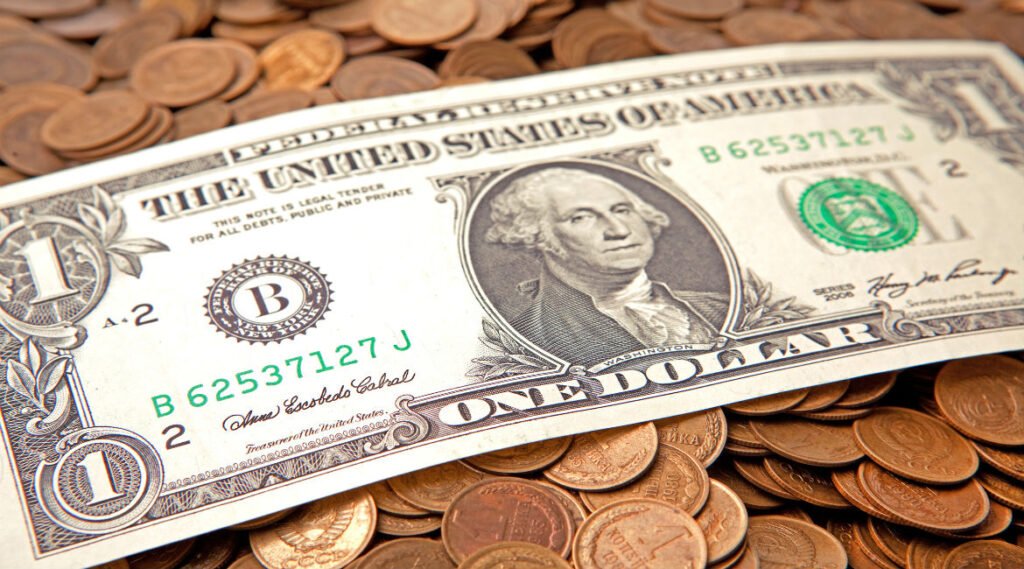
- The US Dollar edges higher after Friday’s PCE inflation data.
- Focus turns to US ISM data before markets close early on Monday in a shortened session.
- The US Dollar Index jumps back above 103.00, right in the middle of a one-month range.
The US Dollar (USD) starts the week in a good mood after its lackluster performance on Friday following US Personal Consumer Expenditures (PCE) numbers. Markets though are still convinced that the US Federal Reverse and its Chairman Jerome Powell will deliver only one interest-rate hike and be done with the tightening cycle, even as he said multiple times last week that the Fed is committed to do at least two. On Monday, the Greenback advances again against most currencies after the firm correction on the back of PCE numbers on Friday.
Monday features a very short trading day ahead as traders will head out for the July 4 US national holiday. Bond trading and the New York Stock Exchange (NYSE) will close at 17:00 GMT and will remain shut on Tuesday. This means that the regular economic calendar is very condensed toward the end of the week with the US Jobs report (NFP) on Friday. On Monday, a batch of data from the Institute for Supply Management (ISM) with a focus on the Manufacturing sector is due at 14:00 GMT, broken down in the headline Purchasing Manager Index (PMI) and the Prices Paid, New Orders, and Employment subindexes.
Daily digest: US Dollar stronger in the shortened trading day
- US Treasury Secretary Janet Yellen is set to head to China July 6-9 in order to underpin and build trust and collaboration between the two nations.
- The S&P Global Manufacturing Purchasing Manager Index (PMI) data for June will be released at 13:45 GMT. The PMI is expected to be unchanged from its preliminary reading of 46.3.
- The ISM Manufacturing numbers will be published at 14:00 GMT. The headline PMI is expected to come in at 47.2 from 46.9. The New Orders Index is anticipated to head higher as well, from 42.6 to 44.0.
- Equities are firmly in the green in Asia. The Hang Seng jumps over 2% near its closing bell, while Japan already closed up 1.41% on Monday. European stocks are under a bit of pressure after Apple issued a warning that it needs to cut Vision Pro Headset production forecast models because of some production issues. US Equity Futures are in the red for both the Dow Jones and S&P 500 index.
- The CME Group FedWatch Tool shows that markets are pricing in an 87.4% chance of 25 basis points (bps) interest-rate hike on July 26. The dislocation between market expectations and what the Fed has been communicating in terms of a number of rate hikes is still persistent and could trigger a stronger US Dollar once markets get to the point of realization.
- The benchmark 10-year US Treasury bond yield trades at 3.83% and is not really making any big waves this Monday. Normally it should be a steady session for the US T-notes as bond trading will stop early with the US National holiday on Tuesday.
US Dollar Index technical analysis: USD is halfway through making it back to Friday’s starting point
The US Dollar is back in the green as traders are heading back into the Greenback, which is already halfway through paring back Friday’s losses. The US Dollar Index (DXY) already reclaimed 103.00 as a big figure and psychological level. In terms of positioning, it should not be a coincidence that the DXY is near the middle of a one-month range and might stay around that point in a wait-and-hold pattern before choosing sides on the back of the US job report (NFP) on Friday.
On the upside, look for 103.54 as the next key resistance level which falls in line with the high of last week. The 200-day Simple Moving Average (SMA) at 104.94 is still quite far away. So the intermediary level to look for is the psychological level at 104.00 and May 31 peak at 104.70.
On the downside, the 55-day SMA near 102.72 has proven its importance as it clearly underpinned price action on Friday by triggering a turnaround after the firm weakening of the Greenback. A touch lower, 102.50 will be vital to hold from a psychological point of view. In case the DXY slips below 102.50, more weakness is expected with a full slide to 102.00 and a retest of June’s low at 101.92.
How does Fed’s policy impact US Dollar?
The US Federal Reserve (Fed) has two mandates: maximum employment and price stability. The Fed uses interest rates as the primary tool to reach its goals but has to find the right balance. If the Fed is concerned about inflation, it tightens its policy by raising the interest rate to increase the cost of borrowing and encourage saving. In that scenario, the US Dollar (USD) is likely to gain value due to decreasing money supply. On the other hand, the Fed could decide to loosen its policy via rate cuts if it’s concerned about a rising unemployment rate due to a slowdown in economic activity. Lower interest rates are likely to lead to a growth in investment and allow companies to hire more people. In that case, the USD is expected to lose value.
The Fed also uses quantitative tightening (QT) or quantitative easing (QE) to adjust the size of its balance sheet and steer the economy in the desired direction. QE refers to the Fed buying assets, such as government bonds, in the open market to spur growth and QT is exactly the opposite. QE is widely seen as a USD-negative central bank policy action and vice versa.

